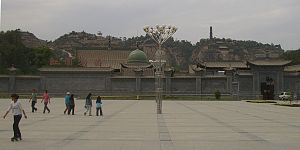Discover Your Roots
SIGN UPDiscover Your Roots
SIGN UPQi is a female name of Chinese origin, meaning "Fine Jade." In Chinese culture, qi is traditionally believed to be a vital force present in all living entities, often described as 'vapor', 'air', or 'breath'. It is associated with concepts such as 'vital energy', 'vital force', and 'material energy'. In traditional Chinese medicine and martial arts, the attempt to cultivate and balance qi is called qigong. The name is associated with the concept of qi, which is polysemous and has various meanings such as 'air', 'gas', 'vigor', 'morale', and 'spirit'. References to concepts analogous to qi are found in many Asian belief systems. Although the existence of qi has not been proven scientifically, it has a significant role in practices such as acupuncture, martial arts, and traditional Chinese medicine. Additionally, the name Qi is linked to the traditional Chinese art of feng shui, Reiki, and qigong.

Qi Jingyi (1656–1719), also known as Hilal al-Din, was a prominent Chinese Sufi master who played a key role in promoting the Qadiriyyah school among Chinese Muslims. Referred to as Qi Daozu (Grand Master Qi) by his followers, he encountered the revered master Afaq Khwaja at the age of 16 and later studied under Khwaja Sayyed Abdullāh, a descendant of Muhammad who had entered China in 1674. Qi Jingyi's grave in Linxia City has become the focus of the shrine complex known as Da Gongbei, or the "Great Tomb," which remains the heart of the Qadiriyyah in China. His influence and teachings have left a lasting impact on the Chinese Muslim community.This summary introduces Qi Jingyi, also known as Hilal al-Din, who was a significant Chinese Sufi master instrumental in the spread of the Qadiriyyah school among Chinese Muslims. His encounters with revered masters and subsequent teachings have left a lasting impact on the Chinese Muslim community, as evidenced by the shrine complex known as Da Gongbei, or the "Great Tomb," which remains the center of the Qadiriyyah in China.




All images displayed on this page are sourced from Wikipedia or Wikimedia Commons.We use these images under their respective Creative Commons or public domain licenses. Wherever applicable, author attributions and license information are provided. If you believe an image is used incorrectly or outside its license terms, please contact us so that we can review and correct the issue.